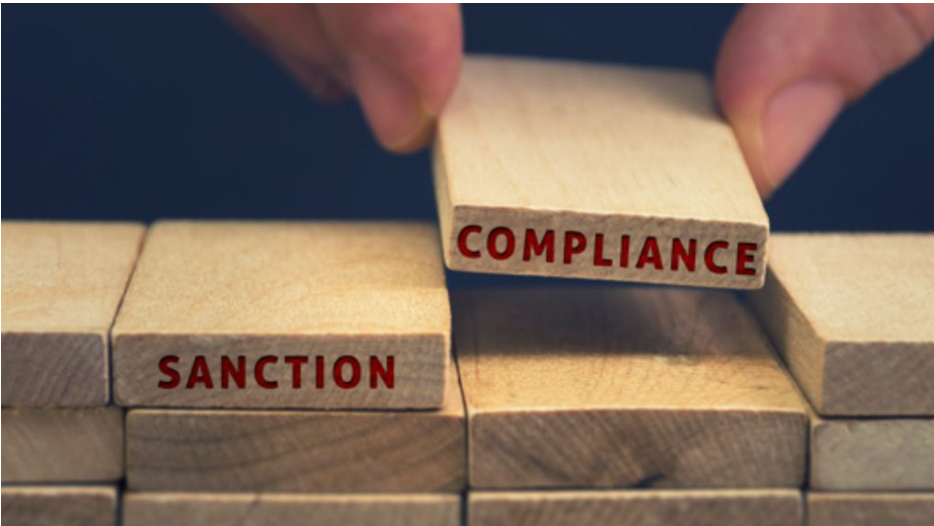
What is Involved in Developing an Effective Sanction Compliance Program?
Have you ever thought about how companies are being compliant with international sanction compliance? It is a way for companies to avoid heavy penalties.
Table Of Content
- Understand Sanction Regulations
- Perform Risk Assessments Initially
- Create Monitoring Procedures Globally
- Establish Approval Processes for Transactions
- Conduct Regular Staff Training
- Implement Audit Practices Routinely
- Nominate Compliance Program Officers
- Report Violations Appropriately Always
- Review Program Effectiveness Periodically
As Blank mentions, “It is much more than rules compliance. Banks must be strong in processes and controls aligned with the changing sanctions.”
A sanction compliance program is protection against legal and financial risks. It will involve complex regulation, monitoring of transactions, and staff training.
A good program allows regulators to know that a company is serious about meeting international sanctions.
This article discusses the critical factors required to establish a sanction compliance program that minimizes risks and keeps businesses compliant.
Understand Sanction Regulations
Knowing the rules forms the basis of strong sanction compliance. Firms must research all sanction laws covering their operations.
This includes sanctions by bodies like the US, EU, and UN against locations, groups, and trade types.
The compliance team must keep up with any additions to sanctioned activities or risk assessments.
Screening business partners against global sanctioned lists ensures no violations of sanction compliance policies.
Bonus: Read the latest developments in Sanction compliance and what they may mean for your organization through global sanctions compliance updates and analysis.
Perform Risk Assessments Initially
Companies undertake sanctions risk assessments as a basis for creating their sanction compliance program.
This is assessing which of the business lines and geographical regions have the most significant sanctions risks.
The existence of existing processes that are sufficiently vital for compliance with global sanctions needs to be determine.
Ongoing sanctions screening is assisted by regularly reviewing levels of risk. This requires automate screening as firms are hit with over 3,600 updates each month to global sanctions lists.
Create Monitoring Procedures Globally
With risk awareness, firms develop monitoring systems. Compliance tracks sanctioned transactions throughout global operations.
Country-specific and company-specific watchlists are helpful. Procedures include auditing wire information, demanding proof of compliance from the partner, and checking shipping documents.
Monitoring is updated so that businesses are made aware of changes in sanction activities by different regulators’ sanction policies.
Regular updates of these systems enable firms to stay current with the latest sanctions lists, ensuring compliance across all jurisdictions.
Establish Approval Processes for Transactions
Any sanction compliance program must include setting approval mechanisms for transactions. Processes need to greenlight or flag large payments, contracts in sensitive locations, and hiring local parties.
Extra sanctions screening and sign-offs are require for key transactions by the compliance experts.
It ensures no unintentional support for sanctioned activities through wire transfers, trades, or deals.
More than 75% of companies use automated screening tools to improve the sanctions compliance check accuracy, following recent data.
Conduct Regular Staff Training
Staff are on the front lines to ensure that no sanction violations occur. Therefore, regular training is held on the latest sanctions laws and screening tools.
Recent geopolitical events may prompt updates to sanctioned lists, which require re-training of employees.
Role-specific lessons help finance officers, traders, and human resource managers uphold the sanction compliance policy.
Training is document to prove due diligence when regulators inspect sanction screening practices.
Implement Audit Practices Routinely
Sanction compliance audits are perform to verify the effectiveness of the program. Audits sometimes return as findings that sanctioned names might have been missed in previous screenings.
Correcting this and reformulating ways keep the firm accountable for its commitment to compliance with global sanctions.
By 2024, the compliance program identified and addressed 12 previously missed sanctioned names, improving its screening effectiveness by 15%.
Nominate Compliance Program Officers
Identify specific officers to manage responsibilities in dealing with screened parties and workflow audits to keep training current on sanctions compliance.
Executives will support officers by approving their official duties. Being completely dedicated to the ongoing process of scanning for sanctions exposure ensures large institutions continue to receive recognition.
This ensures recognition for compliance with the International Sanctions Compliance Guidelines.
Most institutions in 2024 increased staff assignments by 20-30% for sanctions compliance because regulations continue to become more complex globally.
Report Violations Appropriately Always
Internal procedures inform its employees to report red flags in transactions or partners and compliance immediately.
Authorities must learn of any issues pertaining to sanctions compliance as part of the firm’s responsibilities.
Co-operation allows wrongs to be corrected, and worse penalties are prevented down the line. Reporting breaches of the regulatory requirements forthwith also reduces potential fines.
Some firms have experienced penalties that were reduced by up to 40% because of voluntary disclosures.
Review Program Effectiveness Periodically
No compliance program remains optimally effective without assessment. Officers review the degrees of suspicious activity reported and audit outcomes.
Collecting anonymous employee opinions ensures that sanctions screening policies are known everywhere.
Updating risk assessments in response to newly sanctioned individuals or geo-political changes ensures the program is on top of changing compliance needs.
This review cycle is critical for the effectiveness of long-term sanctions compliance. It enhances the program’s ability to be responsive to newly arising compliance challenges.
It keeps analyzing and adjusting the allocation of resources concerning identified high-risk areas.
To read more about how to develop a sanctions screening program that meets your business’s needs, check out our compliance resources.





